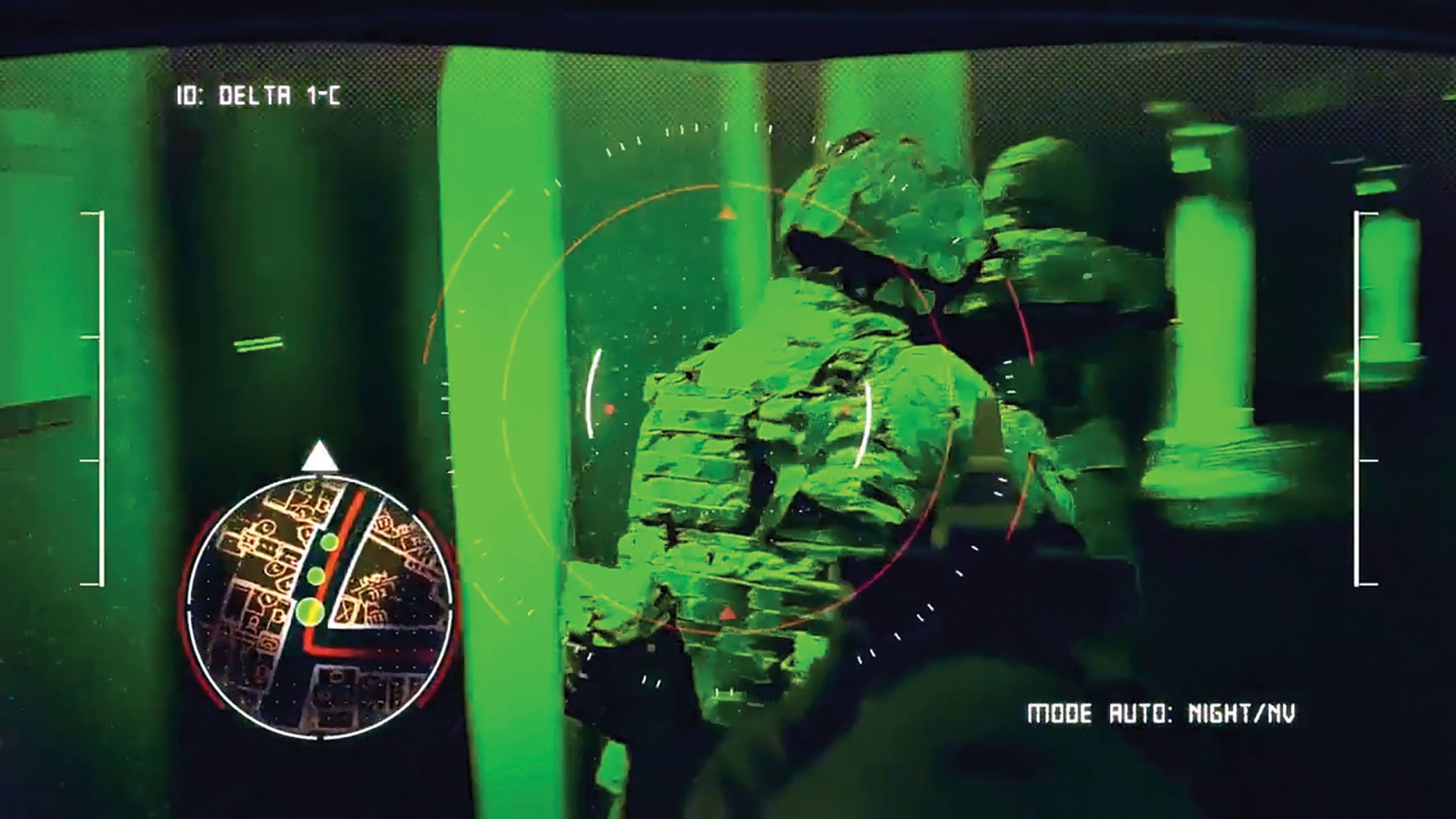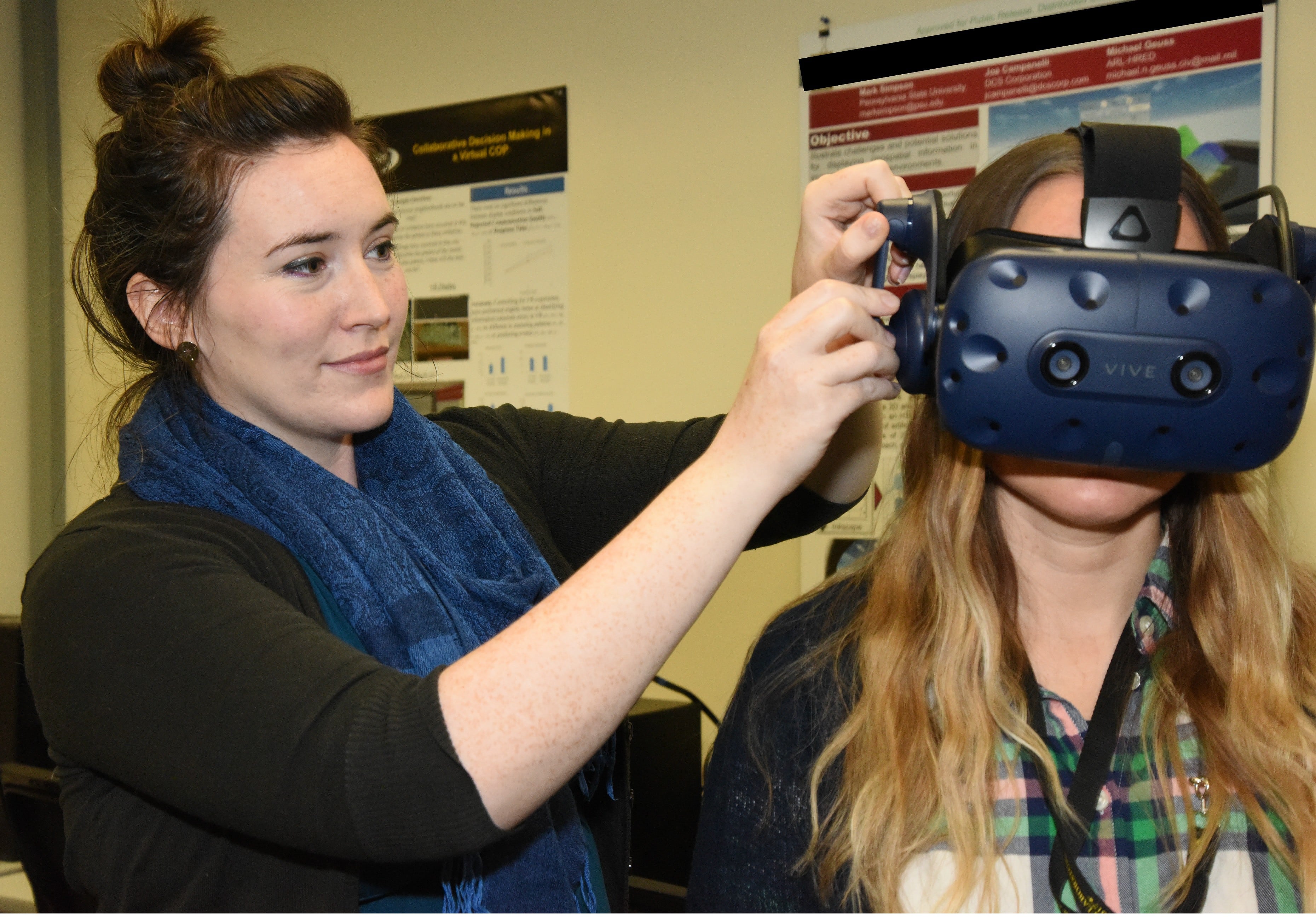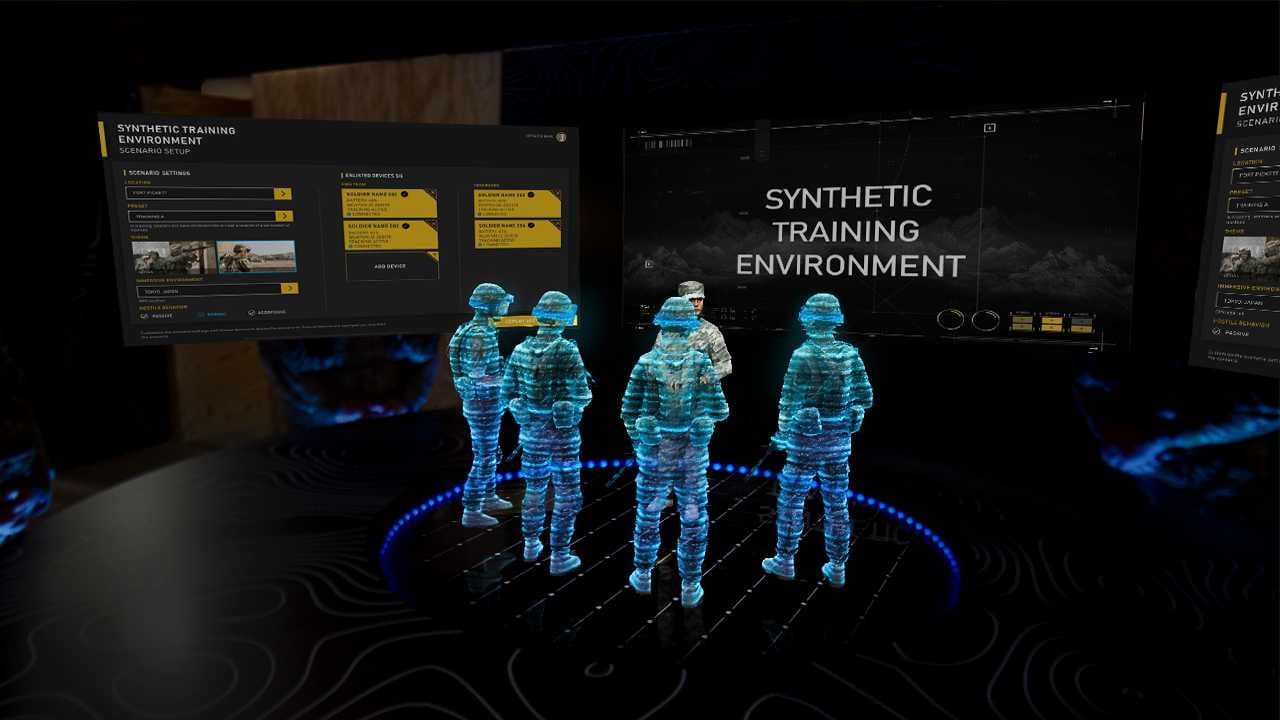On the battlefield, there’s a delicate balance between searching the terrain for targets and getting sucked into a kind of tunnel vision where a soldier can’t see other threats coming.
It’s Army scientist Chloe Callahan-Flintoft’s job to fix that problem with the Army Research Lab at Combat Capabilities Development Command, where she focuses on research in the field of visual attention, according to a CCDC release.
This issue has come to the forefront recently with the use of Augmented Reality, or AR, in newer devices such as the Enhanced Night Vision Goggle-Binocular, fielded last year with Rapid Target Acquisition, and the Integrated Visual Augmentation System, or IVAS, which is currently under development.
RELATED

“I realized a lot of the problems I was interested in were highly applicable to tasks soldiers face — such as how to strike a balance so that you are staying on task, like searching for a target, but not setting such rigid attentional filters that you don’t see unexpected events,” Callahan-Flintoft said.
The ENVG-B goggle, fielded to soldiers in September, adds not only binocular and thermal vision capabilities to the goggle, but also RTA, which allows soldiers to view the weapon sight, the standard view or both in a kind of in-goggle picture-in-picture.
Early testing showed marked improvements in marksmanship for soldiers using RTA, Army officials told Army Times in 2018.

The IVAS steps up the data feed, adding in navigation, position, friendly and enemy forces, communication and RTA, further layering more information for soldiers to process.
Researchers, however, must be aware of cognitive overload problems — essentially putting more information in front of a soldier than they can process in stressful scenarios — so they can maintain the balance of awareness and effectiveness.
The research uses a model that Callahan-Flintoft developed for generating predictions about how the brain will respond to certain scenarios, measures both reaction time and accuracy, according to an Army statement.
The brain is constantly prioritizing what to pay attention to in the environment around it.
“Our environments present the human visual system with an abundance of changing information,” she said. “To meet processing constraints the brain must select and prioritize some pieces of information over others.”
Her model tries to account for both why human attention is pulled away from its task by distractors and also how humans are able sometimes to suppress distractions and stay on task.
Callahan-Flintoft uses her research to first better understand how the brain’s mechanisms works and then applies technology to those processes.
Some of that work includes enhancing human focus with the use of artificial intelligence. For instance, using AI could cue the natural visual system to see relevant information when scanning an area so soldiers don’t miss a threat but can still stay on task.
Todd South has written about crime, courts, government and the military for multiple publications since 2004 and was named a 2014 Pulitzer finalist for a co-written project on witness intimidation. Todd is a Marine veteran of the Iraq War.





